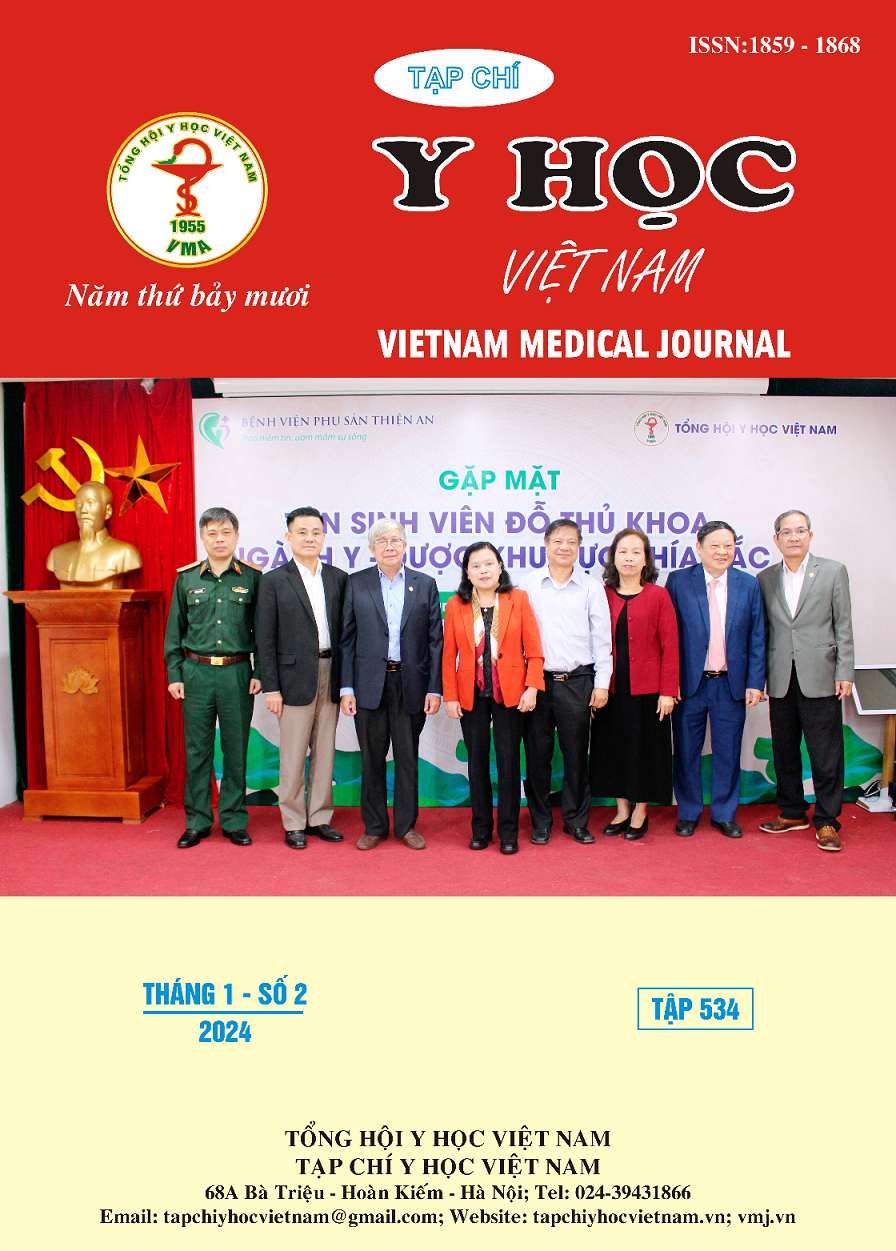CLINICAL, PARA-CLINICAL CHARACTERISTICS AND RISK FACTORS OF ACUTE ISCHEMIC STROKE IN NON-VALVULAR ATRIAL FIBRILLATION PATIENTS
Main Article Content
Abstract
Introduction: Atrial fibrillation (AF) is the most common cardiac arrhythmia in adults, accounting for 2 to 4% of the population [1]. It is also a major risk factor for acute ischemic stroke. In patients with AF, the risk of acute ischemic stroke is 5 times higher [2] and the risk of death more than 2 times higher [3] than in the general population. Ischemic stroke in AF patients causes more disability, higher medical costs, and higher rates of recurrence and mortality than in patients without AF. Therefore, risk stratification of acute ischemic stroke is fundamental in the treatment of AF. Clinically, nonvalvular AF accounts for more than 95% of diagnosed AF cases [4] and is involved in approximately 15% [5] of all ischemic strokes, thus increasing interest. Objective: To investigate the clinical and laboratory characteristics in patients with non-valvular AF at Military Hospital 175; To investigate the risk factors for acute ischemic stroke in patients with non-valvular AF at Military Hospital 175. Methods: We conducted a cross-sectional study of 103 patients visited the Cardiac Department, Military Hospital 175, Febuary 2020 to April 2021. AF was diagnosed based on a 12-lead ECG. Acute ischemic stroke was diagnosed according to the World Health Organization criteria. Clinical and laboratory characteristics were collected according to a questionnaire. Results: A total of 103 nonvalvular AF patients participated in the study, 25 of them have acute ischemic stroke (24.3%). The average age is 72.02. Male is 46.6%. Nearly 95% of patients have at least one comorbidity and nearly 50% have ≥ 3 comorbidities. Predictive factors for high risk of ischemic stroke in patients with nonvalvular AF are non-adherence to prescribed medication and prior stroke history. Conclusion: Physician should focus on educating AF patients about the consequences of ischemic stroke and the benefits of adherence to prescribed medication. Non-adherence to to prescribed medication increases the risk of acute ischemic stroke by 14.9 times. A history of stroke increases the risk of acute ischemic stroke by 11.2 times.
Article Details
References
2. Wolf PA; Abbott RD; Kannel WB et al (1991), "Atrial fibrillation as an independent risk factor for stroke: the Framingham Study", Stroke. 22(8), tr. 983-8.
3. Lin HJ; Wolf PA; Kelly H et al (1996), "Stroke severity in atrial fibrillation. The Framingham Study", Stroke. 27(10), tr. 1760-4.
4. Go AS; Hylek EM; Phillips KA et al (2001), "Prevalence of diagnosed atrial fibrillation in adults: national implications for rhythm management and stroke prevention: the AnTicoagulation and Risk Factors in Atrial Fibrillation (ATRIA) Study", JAMA. 285(18), tr. 2370-5.
5. Gattellari M; Worthington JM; Zwar NA et al (2008), "The management of non-valvular atrial fibrillation (NVAF) in Australian general practice: bridging the evidence-practice gap. A national, representative postal survey", BMC Fam Pract. 9, tr. 62.
6. Nguyen Thi Bao Lien (2013), "Nghiên cứu tỷ lệ các yếu tố nguy cơ của rung nhĩ", Y học thực hành. 868 (5).
7. Sun Y; Hu D; Li K et al (2009), "Predictors of stroke risk in native Chinese with nonrheumatic atrial fibrillation: retrospective investigation of hospitalized patients", Clin Cardiol. 32(2), tr. 76-81.
8. Kang SH; Choi EK; Han KD et al (2017), "Risk of Ischemic Stroke in Patients With Non-Valvular Atrial Fibrillation Not Receiving Oral Anticoagulants - Korean Nationwide Population-Based Study", Japanese Circulation Society.


